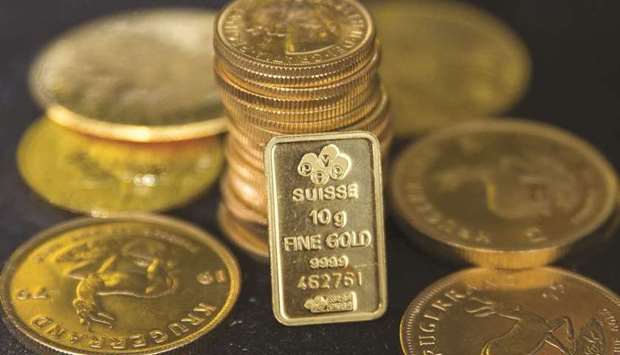Gold is expected to trade sideways in the coming months; Fitch Solutions said and noted the precious metal could struggle in 2022 as inflation pressures start to wane.
Fitch Solutions maintained its gold price forecast for 2021 at $1,780/ounce with prices having averaged $1,803/oz in the year to date and hovering around $1,815/oz as of August 30.
By 2022, the price will weaken to $1,700/oz, Fitch Solutions noted.
Rising bond yields and shifting monetary policies will prove to be significant headwinds, the analysts said.
The neutral outlook towards gold prices in 2021 was due to conflicting factors. Among the supportive factors are still-elevated inflation, low US treasury yields (the 10-year US treasury yield broke below 1.45% on June 1), rising geopolitical risks on the situation in Afghanistan and the rapid rise in Covid-19 caseloads across many countries due to the Delta variant.
"The main headwind denting gold's appeal in 2022 and beyond will be easing of inflationary pressures as well as normalisation of monetary policy, including the slowing momentum of central banks' balance-sheet buying."
Gold prices have largely traded sideways so far in H2, barring a flash collapse in early August, Fitch Solutions said.
“While we expect some volatility in the months ahead, we are mostly neutral towards gold prices in the short term.”
US gold futures eased 0.4% to $1,826.30, a Reuters dispatch said.
Limiting gold’s upside, the dollar index rose 0.1% after falling to a one-month low in the last session.
Recent Labour Department data showed US non-farm payrolls increased by 235,000 jobs last month, far below economists’ expectations of 728,000.
“After the labour data disappointed the markets, investors are seeing less pressure on Jerome Powell to start tapering,” said Carlo Alberto De Casa, a market analyst at Kinesis.
“The tapering could start probably only in December and these are supportive elements for gold prices,” De Casa said, adding that gold should remain above $1,800 in the near term.
Some investors view gold as a hedge against inflation that may follow stimulus measures, while lower interest rates reduce the opportunity cost of holding non-yielding bullion.
Fitch Solutions maintained its gold price forecast for 2021 at $1,780/ounce with prices having averaged $1,803/oz in the year to date and hovering around $1,815/oz as of August 30.
By 2022, the price will weaken to $1,700/oz, Fitch Solutions noted.
Rising bond yields and shifting monetary policies will prove to be significant headwinds, the analysts said.
The neutral outlook towards gold prices in 2021 was due to conflicting factors. Among the supportive factors are still-elevated inflation, low US treasury yields (the 10-year US treasury yield broke below 1.45% on June 1), rising geopolitical risks on the situation in Afghanistan and the rapid rise in Covid-19 caseloads across many countries due to the Delta variant.
"The main headwind denting gold's appeal in 2022 and beyond will be easing of inflationary pressures as well as normalisation of monetary policy, including the slowing momentum of central banks' balance-sheet buying."
Gold prices have largely traded sideways so far in H2, barring a flash collapse in early August, Fitch Solutions said.
“While we expect some volatility in the months ahead, we are mostly neutral towards gold prices in the short term.”
US gold futures eased 0.4% to $1,826.30, a Reuters dispatch said.
Limiting gold’s upside, the dollar index rose 0.1% after falling to a one-month low in the last session.
Recent Labour Department data showed US non-farm payrolls increased by 235,000 jobs last month, far below economists’ expectations of 728,000.
“After the labour data disappointed the markets, investors are seeing less pressure on Jerome Powell to start tapering,” said Carlo Alberto De Casa, a market analyst at Kinesis.
“The tapering could start probably only in December and these are supportive elements for gold prices,” De Casa said, adding that gold should remain above $1,800 in the near term.
Some investors view gold as a hedge against inflation that may follow stimulus measures, while lower interest rates reduce the opportunity cost of holding non-yielding bullion.


